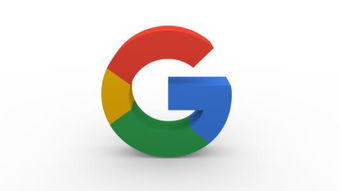Pay Google to Advertise: A Comprehensive Guide
Are you looking to expand your business reach? Do you want to tap into the vast audience that Google has to offer? Paying Google to advertise is a strategic move that can significantly boost your brand’s visibility and drive more traffic to your website. In this detailed guide, we’ll explore the various aspects of advertising with Google, from setting up your campaign to measuring its success.
Understanding Google Ads

Google Ads, formerly known as Google AdWords, is an online advertising platform that allows businesses to promote their products or services on Google’s search engine and other Google properties. By paying Google to advertise, you can appear in search results, on websites, and even on YouTube videos, reaching potential customers at the right moment.
Here’s a quick overview of the key components of Google Ads:
| Component | Description |
|---|---|
| Keywords | Words or phrases that trigger your ad to appear when someone searches for them. |
| Ad Copy | The text that appears in your ad, including the title, description, and display URL. |
| Bid | The amount you’re willing to pay each time someone clicks on your ad. |
| Quality Score | A measure of how relevant and useful your ad is to the user, affecting your ad’s position and cost. |
Setting Up Your Google Ads Campaign

Before you can start paying Google to advertise, you need to set up a Google Ads account. Here’s a step-by-step guide to get you started:
- Go to Google Ads and click on “Start now.” Sign in with your Google account or create a new one.
- Choose your campaign type, such as Search, Display, or Video.
- Select your target audience, including location, language, and devices.
- Set your budget and bidding strategy.
- Create your ad, including the title, description, and display URL.
- Choose your keywords and negative keywords to refine your targeting.
- Review and submit your campaign for approval.
Optimizing Your Google Ads Campaign

Once your campaign is live, it’s essential to monitor its performance and make adjustments as needed. Here are some tips for optimizing your Google Ads campaign:
- Analyze your campaign’s performance regularly to identify areas for improvement.
- Use the Google Ads interface to adjust your keywords, ad copy, and bidding strategy.
- Leverage Google Analytics to track conversions and understand user behavior.
- Experiment with different ad formats and targeting options to find what works best for your business.
- Keep an eye on your budget and adjust it as needed to ensure you’re getting the most out of your advertising spend.
Measuring the Success of Your Google Ads Campaign
Measuring the success of your Google Ads campaign is crucial to understanding its impact on your business. Here are some key metrics to track:
- Click-Through Rate (CTR): The percentage of people who clicked on your ad after seeing it.
- Conversion Rate: The percentage of people who completed a desired action, such as making a purchase or filling out a contact form.
- Cost Per Click (CPC): The average amount you pay each time someone clicks on your ad.
- Return on Ad Spend (ROAS): The revenue generated from your ads divided by the cost of your ads.
By tracking these metrics, you can gain valuable insights into the effectiveness of your Google Ads campaign and make data-driven decisions to improve its performance.
Conclusion
Paying Google to advertise is a powerful tool for businesses looking to grow their online presence. By understanding the ins and outs of Google Ads, setting up a well-optimized campaign, and measuring its



